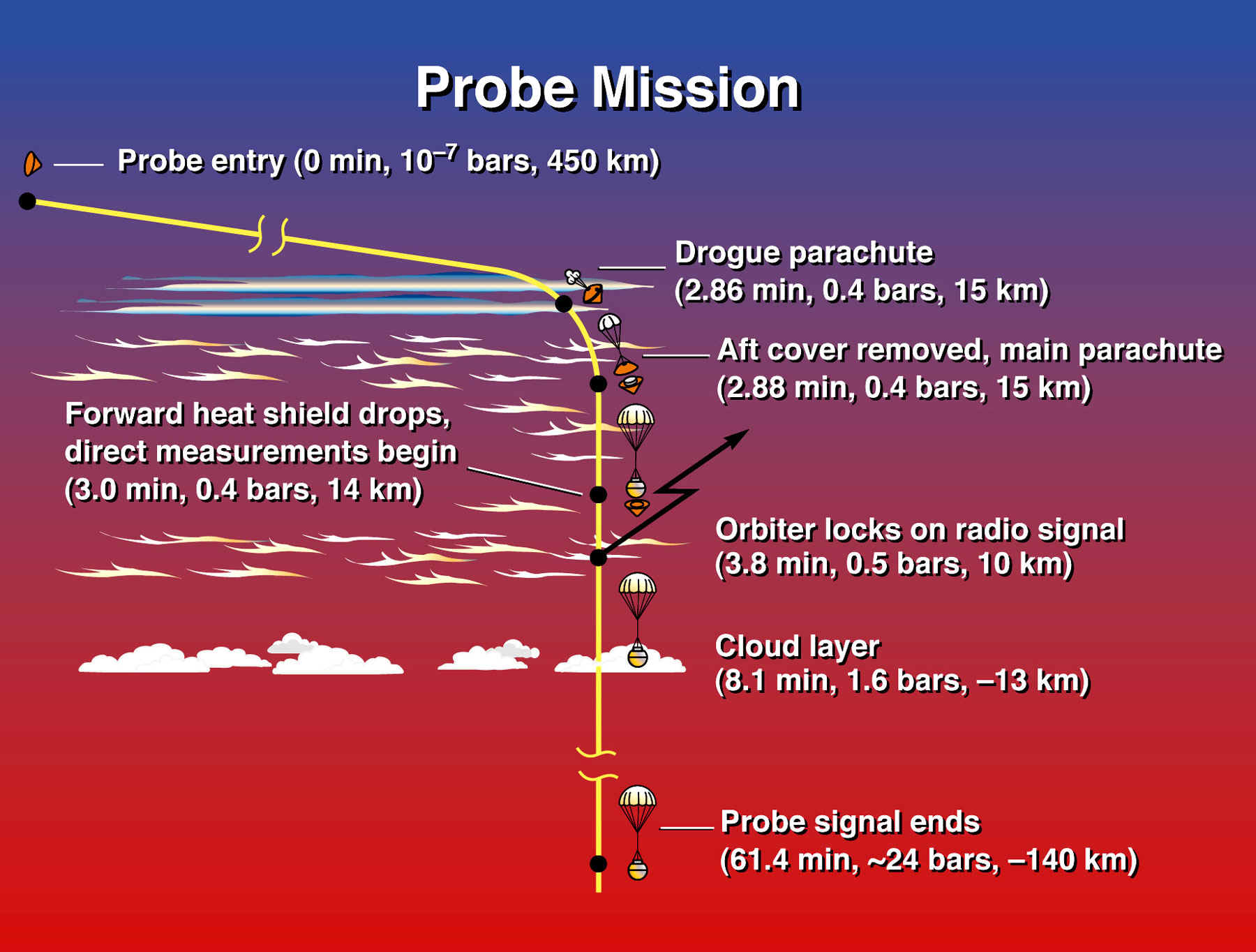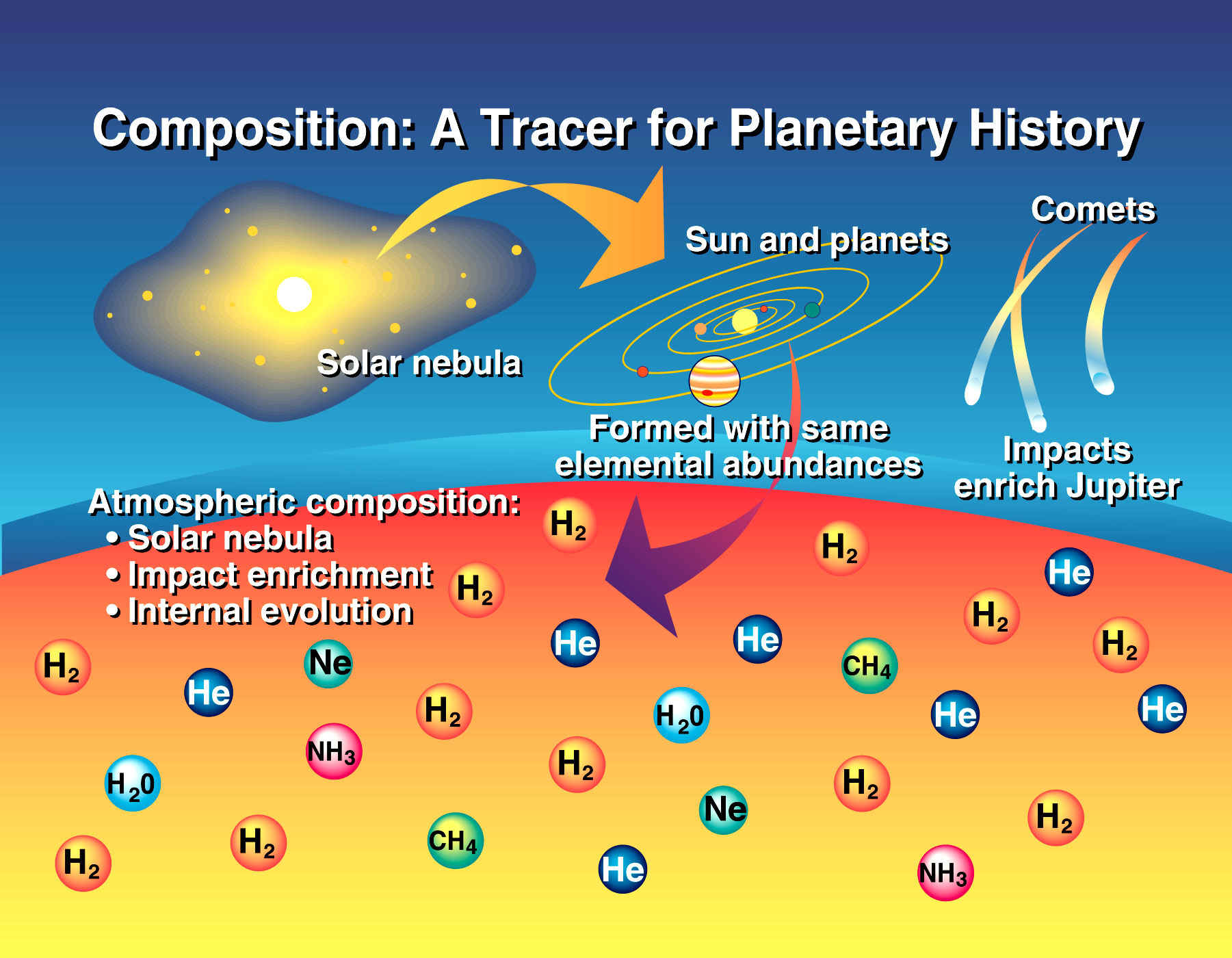This artist's concept shows the Galileo spacecraft flying past Io to Jupiter. The probe is at the end pointed toward Jupiter.

| Galileo Probe This artist's concept shows the Galileo spacecraft flying past Io to Jupiter. The probe is at the end pointed toward Jupiter. |
 |
Below, the probe is being completed at the Jet Propulsion Laboratory in Pasadena, California. Not long after the Galileo mission arrived at Jupiter, the probe was released and fell through the atmosphere, controlled by a parachute. As it fell, it returned data on temperature, pressure, composition, wind speeds, and prevalence of clouds. The probe returned data for 61 minutes while it fell to 200 km below the cloud tops. It failed because it got too hot (this failure was expected!); the temperature when it quit was 1520C (about 3000 F).


 |
The probe entered the upper atmosphere of Jupiter (0 minutes on this chart) at high speed. It was protected from burning up due to friction with the upper atmosphere by a conical heat shield. A small parachute was released at 2.86 minutes, and it pulled the main parachute out. Shortly afterwards, the heat shield was released and the radio signal from the probe was picked up by the main orbiting spacecraft. The probe then fell about 150 km (100 miles) in about an hour, before failing. |
What the Galileo probe discovered:
=> Helium was expected to be slightly less abundant because of the expected formation of He droplets which would fall closer to the center of Jupiter.
 |
Where did the oxygen go? Jupiter would have formed with the same elemental abundances as the sun. The differences in the abundances suggests that Jupiter did not form by simple collapse of a part of the cloud which ultimately formed the Sun. An alternative model would have Jupiter form by accretion beginning with a small icy core. These elements (particularly oxygen) are then locked up in this core rather than remaining in the atmosphere. |
Another surprising result from the Galileo probe is the existence of ~ 700 km/hr winds which persist to great depths into the atmosphere. Such winds cannot be powered by sunlight which cannot penetrate through the clouds; Jupiter's source of internal energy may be the cause.